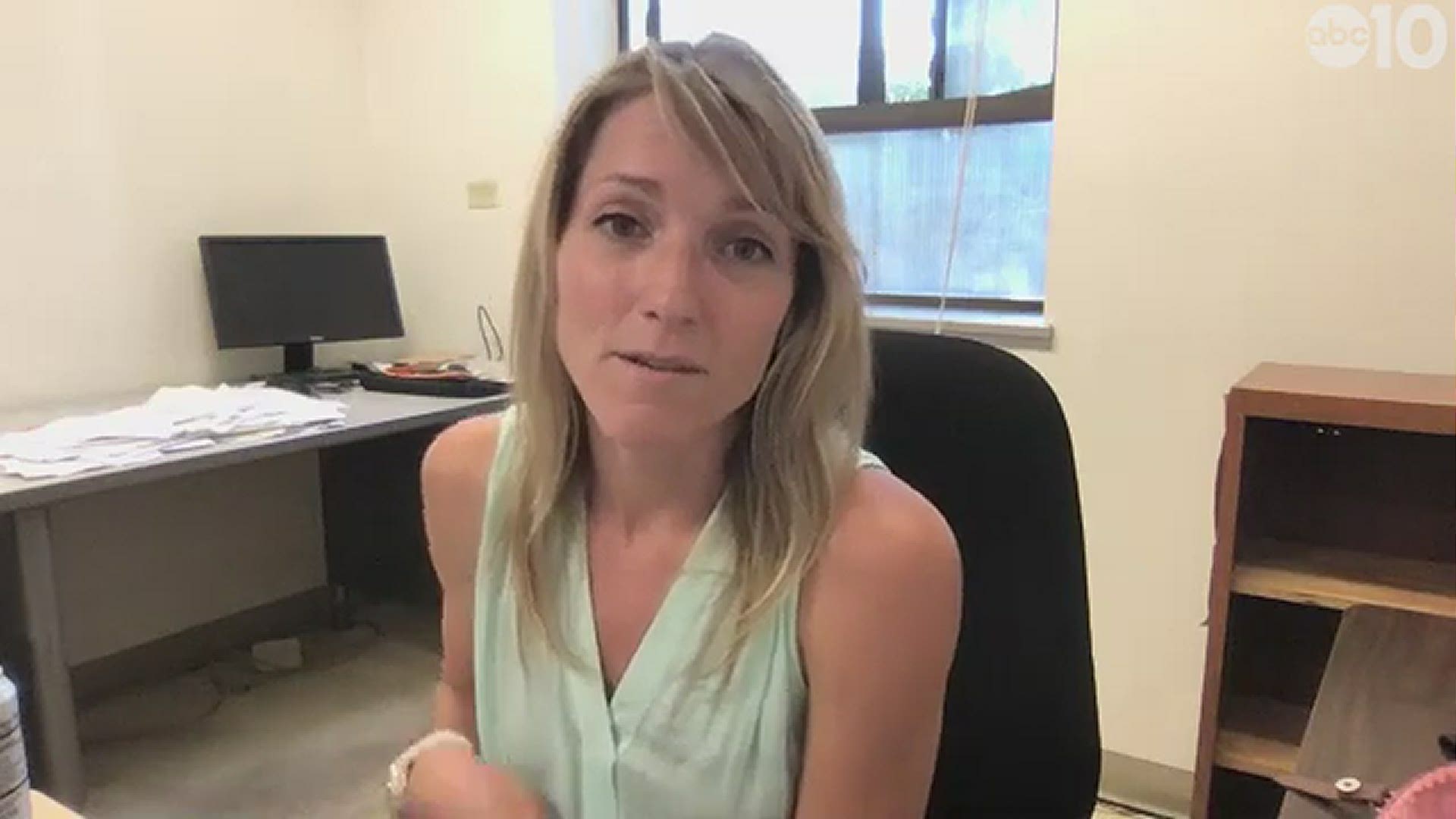CALIFORNIA, USA — Dr. Angela Chung, a project scientist at the Berkeley Seismology Lab, says the magnitude 6.0 earthquake that rattled parts of Northern California Thursday was nothing too out of the ordinary.
The United States Geological Survey said Thursday's quake was near the California-Nevada border, southeast of Markleeville. Its epicenter was centered just miles from Walker, California. As of 8 p.m., the USGS had recorded 61 tremors all around the area of the original quake.
Many on social media in Sacramento, and as far as Modesto, have reported feeling the earthquake. People from Lake Tahoe to Fresno also reported feeling the shaking.
Dr. Chung spoke with ABC10 and broke down what exactly happened, explaining early USGS reports of multiple earthquakes around the same time and the concept of this specific quake being "normal behavior."
Regarding the earthquake, what exactly happened?
“There was an earthquake this afternoon up in the Sierras. It was over in the Walker Lane area, which is over near the town of Walker. It was a very normal earthquake. We do get earthquakes up and down that area, and in that case it was about a (6.0M) and as we would expect there has been a lot of aftershocks from this earthquake. That’s very normal behavior when we see a big earthquake. There can be earthquakes happening for days afterward.”
Why is this earthquake being described as "normal?"
“We have earthquakes that happen all day long, and they happen throughout California. Most of them are so tiny that nobody can feel them, but some of them are bigger, and we do feel them. And so, it's very normal for us to have these earthquakes happening in California."
"We live in earthquake country, and they are great reminders for us to be prepared. We can get our earthquake safety kit, we can make sure that we've downloaded MyShake, another earthquake early warning app. They're great reminders that we do live in earthquake country. These happen all the time. We just might not feel it depending on where you are.”
There were USGS reports of two earthquakes at one point, then only one. What happened?
“Sometimes our sensors, they get a little confused. We see the waves coming in and, sometimes, it can get tricky to figure out exactly where that earthquake is happening. That's when people come in, and they say, ‘No, look. We can change things a little bit here' and see that, in fact, that really was just one earthquake."
"So in this case, there really was just one big earthquake, that magnitude (6.0), followed by other earthquakes in that area. But from what we saw, for example, the earthquake early warning system sent out, I think, two alerts for that earthquake as well. And so, we can see sometimes that our system gets a little bit confused, but we can help it out and then come to the conclusion that it is just one earthquake.”
What is the best way to comprehend 'magnitude'?
“It's basically a scale that tells us how much energy is being released from the earthquake. It's not necessarily intuitive for most people, I think, but again, that intensity scale - that can give us a little bit of a better understanding of how much shaking… it ranges from light shaking to strong shaking, which is a little bit easier for us to understand.”
“I'll agree that our magnitude scale is a little bit tricky to kind of wrap your head around. That's magnitude, that talks about how big the earthquake is (and) how much energy is released during that earthquake. The thing that might be a little bit more intuitive is intensity, which is how much shaking you feel, and that depends on how close you are to the earthquake, how big the earthquake is. That can really vary that can vary for anybody, depending on how close you are to the earthquake."
Is this the prelude to the big one?
“We never know if an earthquake is going to be a foreshock or an aftershock until something bigger comes along or doesn't. For example, with the Ridgecrest earthquakes that happened in 2019, we had magnitude 6.4. earthquake. We thought that that was going to be it and there were going to be aftershocks, but it turned out that that was actually happening just before the magnitude 7.1 earthquake, which was the main shock. But we don't know that that's going to happen until afterwards.”
“There's a small chance, about a 10% chance, that there could be a larger earthquake that happens after this one. But most likely, this is going to be the biggest one. And, there's going to be continued aftershocks following this one.”
ALL ABOUT EARTHQUAKE PREP:
- What you need to know about ShakeAlert, the earthquake warning system | Earthquake Ready or Not
- What can happen to our power grids after an earthquake? | Earthquake Ready or Not
- Why a disaster kit will help you survive the next big one | Earthquake Ready or Not
- What you need to know about the San Andreas fault | Earthquake Ready or Not
- The science of forecasting earthquakes | Earthquake Ready or Not
- How vulnerable is California to tsunamis? | Earthquake Ready or Not
WATCH MORE: Earthquakes come without warning and if you aren’t prepared by the time the big one hits, you will be too late. The 2019 earthquake near Ridgecrest, California shined a spotlight on the need to be prepared with a disaster kit and a plan. A little work now could help you survive the next quake.

